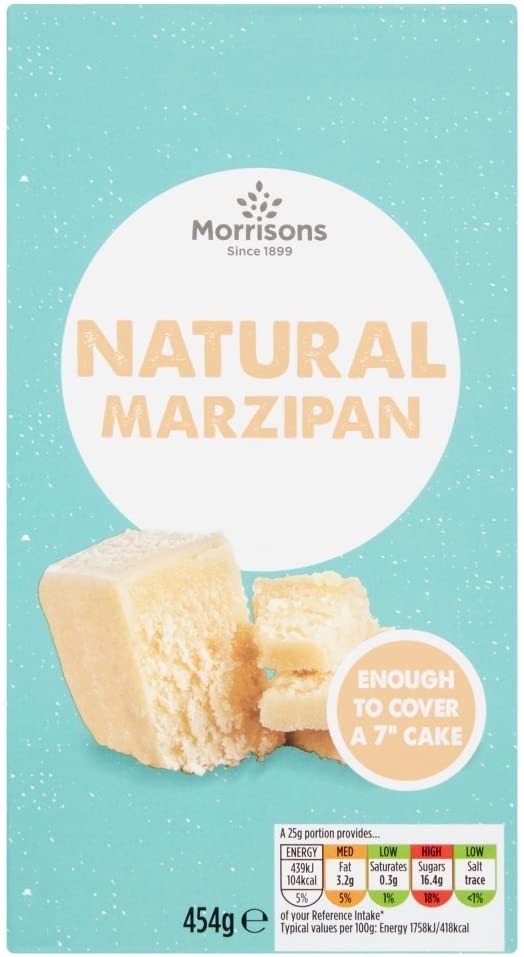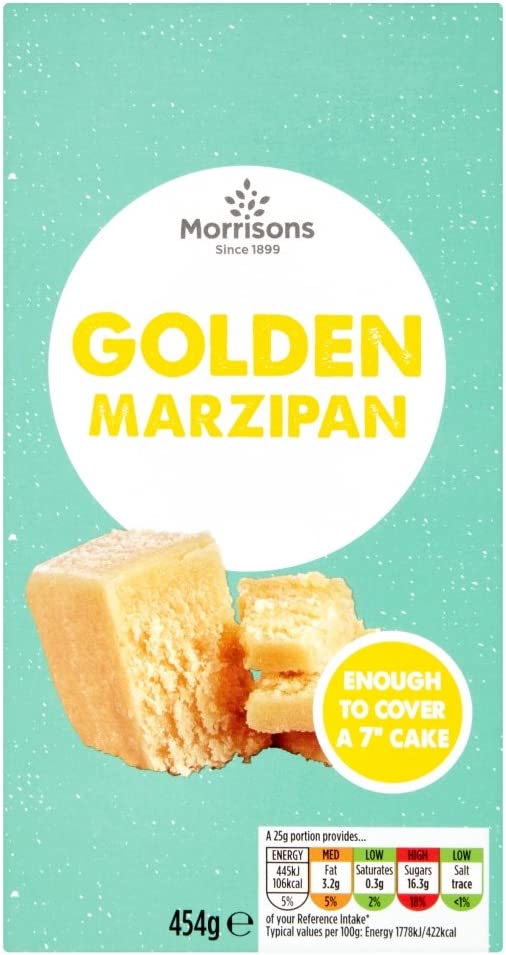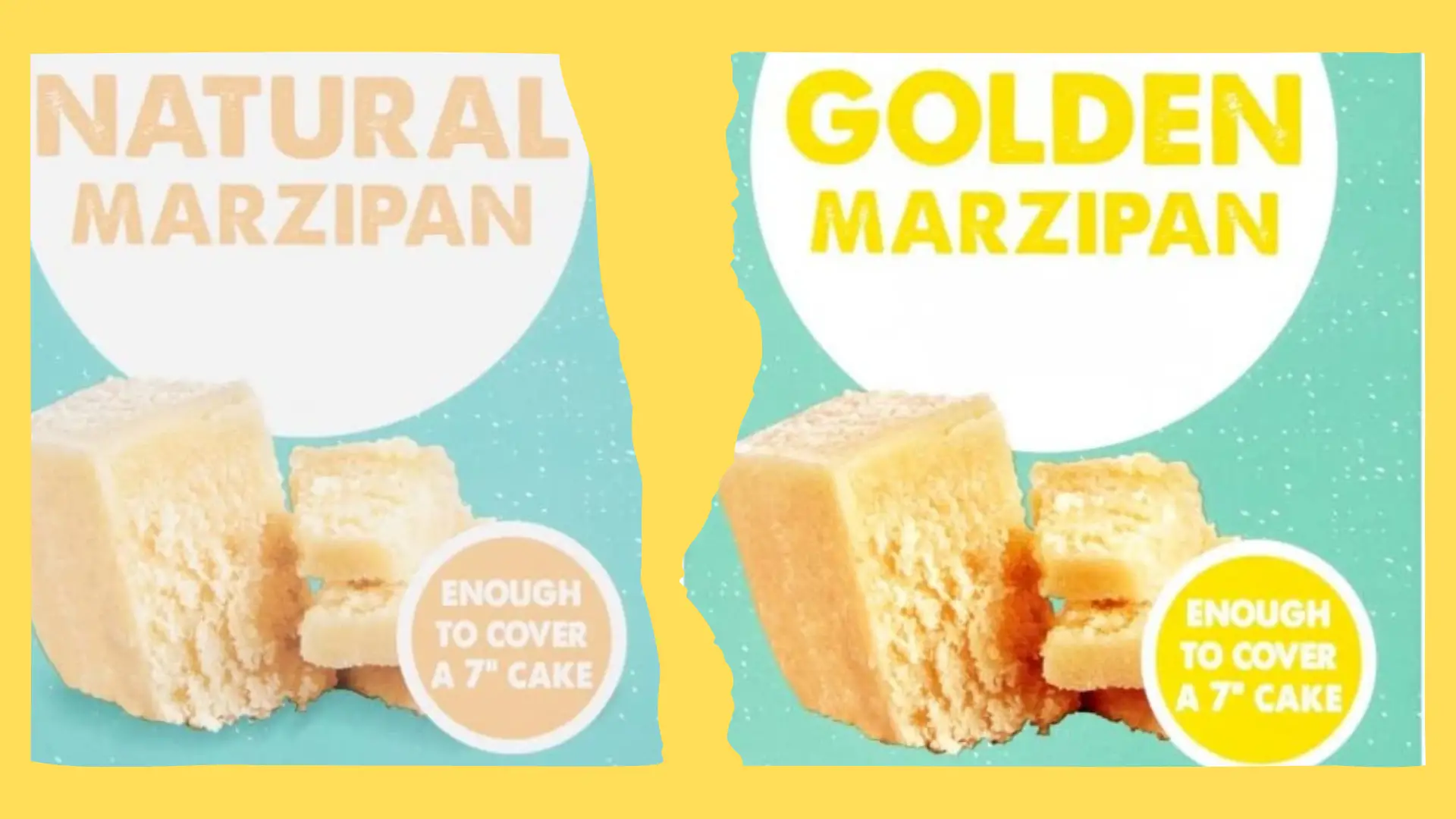Some of the links on this page are affiliate links, which means that Buzzy Kitchen earns commission from purchases made – at absolutely no extra cost to you. Thank you so much for supporting Buzzy Kitchen!
There’s nothing worse than baking a cake, following a recipe, and seeing that it spots for a certain variety or type of ingredient that you don’t have in your kitchen cupboards. What’s the difference between natural marzipan and golden marzipan, though? And can you use one in place of the other?
Why don’t we take a closer look and get you some answers?
What is Natural Marzipan?
Natural marzipan, also known as regular marzipan and white marzipan, is the type that you’re probably already using. It is white, just as its alternative name suggests.

Vegan & vegetarian-friendly
No artificial colours or flavours
What is Natural Marzipan Used For?
Natural marzipan – because it is natural, uncoloured, and left white – is great when you need coloured marzipan to decorate a cake. As you can probably imagine, the white variety soaks up the colour a lot easier, leading to bolder and brighter finished products.
What is Golden Marzipan?
Golden marzipan, also known as yellow marzipan, is, just as the name would lead you to believe, marzipan that is golden in colour – an orange, yellow, golden shade.

Vegetarian-friendly
What is Golden Marzipan Used For?
Golden marzipan is frequently used as an entire covering of cakes. On a Christmas cake, for example, a layer of golden or yellow marzipan can be used as a smoothing layer, affixed to the cake with a thin layer of sticky jam.
When the golden marzipan layer has been affixed and smoothed out, another layer is often added on top – a fondant or icing layer.
Golden marzipan is also commonly used for the very British Battenberg cake (which I love, by the way!).

– Soft chequered sponge wrapped in a smooth, nutty marzipan blanket
– No artificial colours or hydrogenated fat
What’s the Difference Between Natural Marzipan and Golden Marzipan?
Golden or yellow has had natural colourings added to it, to make it that golden-yellow colour.
Natural or white marzipan has been left natural, without colouring added to it. You can add your own dyes and colours to white marzipan with more ease than you can the golden variety.
Aside from appearance, there are no differences between golden or yellow marzipan and natural or white marzipan.
They taste the same.
They feel the same.
They react the same way when used in baking.
(Although different brands of each might be slightly different to one another.)
Are Golden Marzipan and White Marzipan Interchangeable?
Yes, golden marzipan and white marzipan are interchangeable.
You can usually use either in a recipe, especially if it is for that filling layer between a fruit cake (for example) and the final fondant or icing layer.
When you need marzipan to work with a certain theme or aesthetic, white marzipan works best. It absorbs colour easier and better, meaning that a few drops of food colouring changes the entire look.
Frequently Asked Questions
What Colour is Golden Marzipan?
Golden marzipan is a golden-yellow colour. This is because of an added natural colouring ingredient: Lutein. This variety of marzipan is also known as yellow marzipan.
What Colour is Natural Marzipan?
What Colour is Natural Marzipan?
Natural marzipan also goes by the name white marzipan, because it is white.
Are White Marzipan and Natural Marzipan the Same Thing?
Are White Marzipan and Natural Marzipan the Same Thing?
Yes – white marzipan and natural marzipan are two names used for the same thing.
Are Golden Marzipan and Yellow Marzipan the Same Thing?
Are Golden Marzipan and Yellow Marzipan the Same Thing?
Yes, once again, golden marzipan and yellow marzipan are two names used for the same thing.
